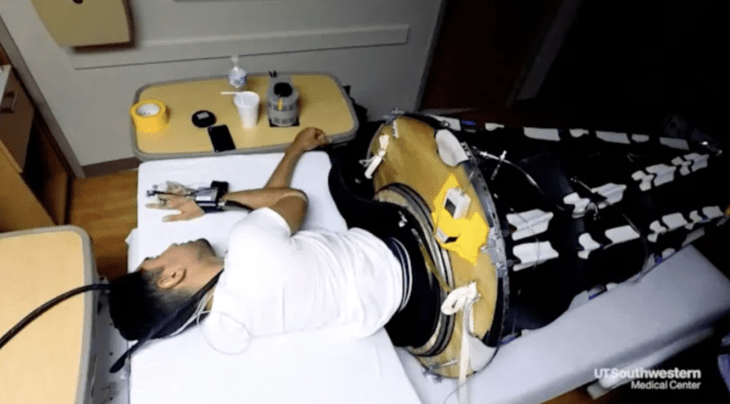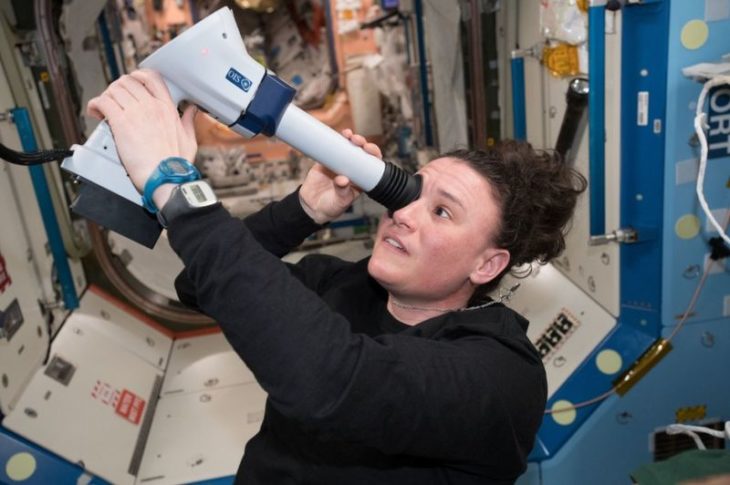We’re always here for fresh astronaut news, whether it’s an Apollo 11 anniversary or John Glenn outliving Phyllis Diller.

(Photo: University of Texas, Houston via Engadget)
Today’s astronaut story is in a more scientific vein: how to keep astronauts’ eyeballs from getting squashed on long flights. The answer is the crazy sleeping bag you see above.
“Squashed” means eyeballs that are flattened a bit, not totally obliterated (you ghoul). The problem is that in space, fluid tends to settle in the heads of astronauts, since there’s no gravity to pull it down lower in the body. As Engadget reports, astronauts are required to have 20/20 vision to start with, but on long tours on the International Space Station, all that extra fluid pushes their eyeballs out of shape and messes with their eyesight.

Astronaut Serena Auñón-Chancellor examines her eyes during her 2018 stint on the International Space Station. (NASA photo)
In 2005, for instance, astronaut John Phillips left Earth with 20/20 vision and returned six months later with his vision at 20/100. NASA has had astronauts taking measurements of their vision for years; the problem might even threaten future trips to Mars.
Now comes the possible solution: pressurized sleeping bags (designed in part by REI!) that force fluid downward in the body during sleep, keeping the pressure off the head and eyeballs. If it looks like a newfangled iron lung, well, it does work in vaguely similar way, and for similarly positive results.
Here’s more: NASA’s New Sleeping Bag Could Prevent Eyeball ‘Squashing’ on the ISS
